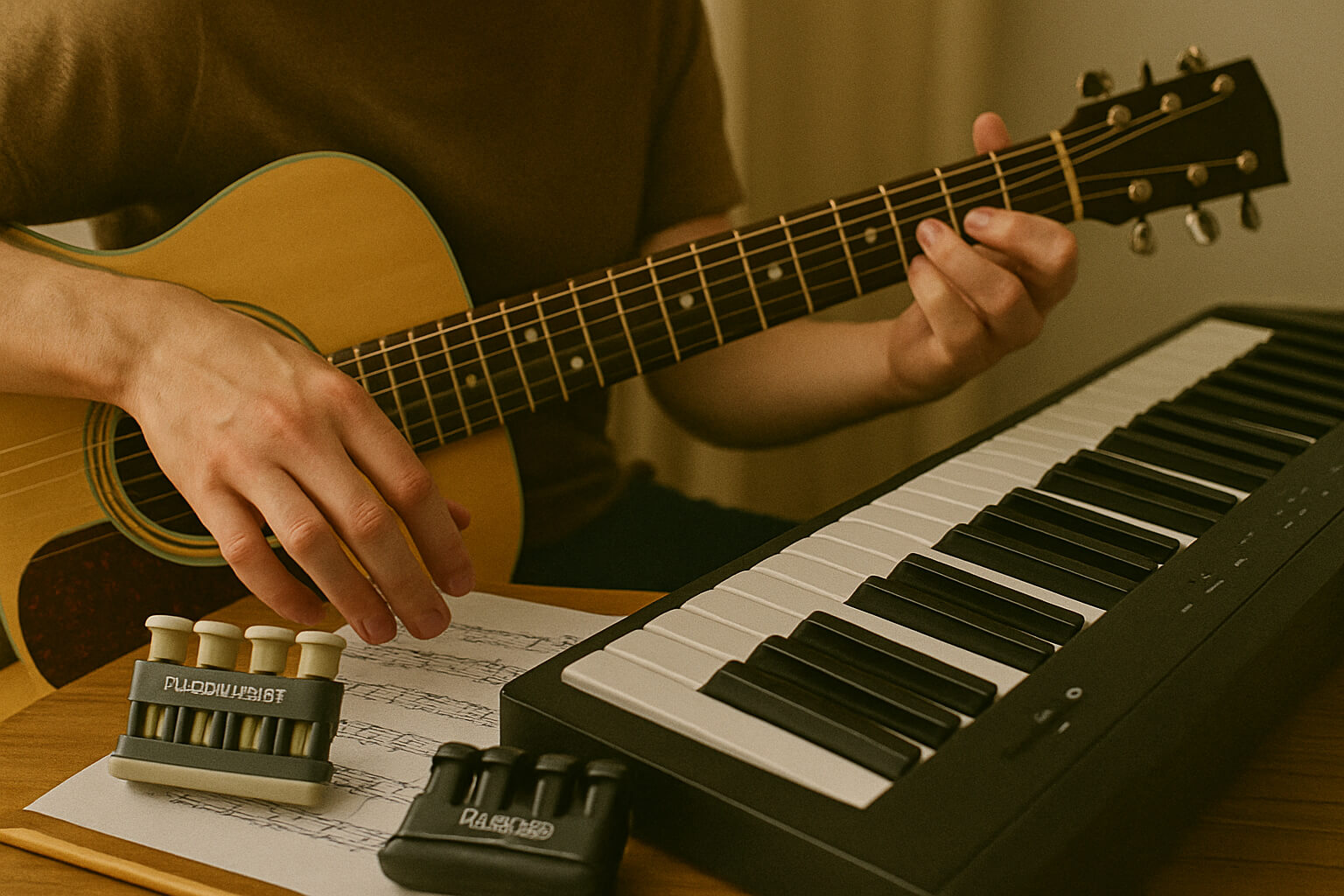August 08, 2025

Whether you’re a pianist gliding across keys, a guitarist nailing intricate solos, or a violinist performing complex runs, finger strength and dexterity are fundamental to mastering your instrument. Strong, agile fingers give you better control, speed, and accuracy — allowing your music to flow naturally without tension or strain.
In this guide, we’ll break down practical exercises, tools, and techniques you can use to improve your finger agility, along with recommended platforms, products, and expert resources to make your training effective and enjoyable.
Developing finger strength helps with:
For instance, pianists benefit from stronger independent finger action for scales and arpeggios, while guitarists require agility for chord changes and solos.
Related Read: Practice Makes Perfect – Effective Strategies for Improving Musical Skills
Just like athletes warm up their muscles before intense activity, musicians should do gentle exercises before playing. This prevents injuries and prepares your hands for more demanding tasks.
Recommended Warm-Ups:
Pro Tip: Start with a metronome at a slow tempo and gradually increase speed.
Related Read: The Benefits of Learning Music Theory – Understanding theory enhances the purpose of your technical exercises.
Sometimes, you can strengthen your fingers even when you’re away from your instrument.
Recommended Tools:
Finger independence is just as important as strength. Try these:
Related Read: Ear Training Exercises – How to Hear Chords and Melodies – Improves the connection between your ears and finger movement.
Modern tools and platforms make it easier to monitor your improvement:
Related Read: Digital Audio Workstations Explained – Choosing the Right Software
Strength without proper technique can lead to tension and injury.
Related Read: The Importance of Proper Posture and Ergonomics for Musicians
Finger strength and dexterity don’t develop overnight. Consistent, mindful practice — even 10–15 minutes daily — can yield major improvements in a few weeks.
If you hit a plateau, vary your exercises or incorporate improvisation to keep training fresh.
Related Read: Overcoming Plateaus – Strategies for Breaking Through Learning Barriers
Strong, agile fingers are the backbone of confident and expressive music performance. By combining warm-ups, instrument drills, off-instrument training, technology, and proper form, you can unlock your full potential as a musician.
And remember — your goal is not just to strengthen fingers but to make them responsive and expressive tools for your art.
Stay up to date with the latest tips, expert insights, product reviews, and step-by-step guides to help you grow, create, and succeed—no matter your industry or passion.